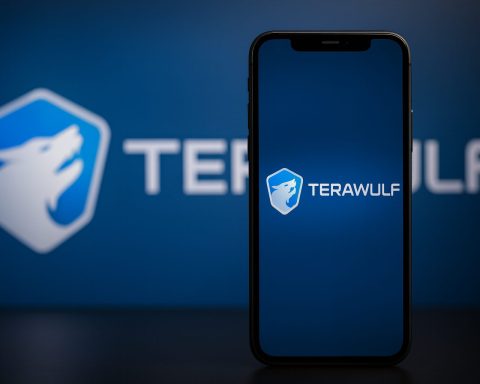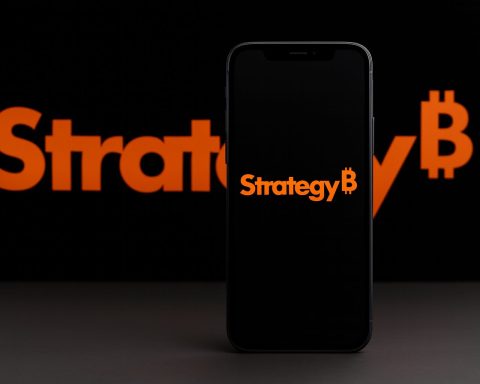Meta description: Intel (INTC) stock is trading in the mid-$34 range on November 24, 2025, as investors weigh new AI packaging momentum, a 10% U.S. government stake, and rich valuations following strong Q3 results.
Intel stock snapshot for November 24, 2025
Intel Corporation (NASDAQ: INTC) is trading around the mid‑$34s in early U.S. trading on Monday, November 24, 2025, based on delayed quotes from major market data providers. [1]
Key numbers around today’s session:
- Share price: roughly $34.5 per share as of the latest quote.
- Market capitalization: about $165 billion. [2]
- 52‑week range:$17.67 (low) to $42.48 (high), meaning the stock is trading roughly 19% below its late‑October peak but still far above its 2024 lows. [3]
- Recent trading volume: Intel has recently been moving 60–120 million shares per day, with a 30‑day average around 97 million shares. [4]
After a brutal downturn last year, Intel has staged a major comeback: its share price has risen almost 90% year‑to‑date in 2025, outpacing even AI favorite Nvidia at one point, according to Reuters’ post‑earnings coverage in October. [5]
That rally, however, now sits on top of vanishingly small trailing earnings. Intel’s trailing twelve‑month EPS is about $0.01, giving it a headline P/E ratio above 3,400, while its forward P/E sits near 59 based on consensus forecasts. [6]
In other words, today’s $34‑ish price embeds very high expectations for Intel’s turnaround under new CEO Lip‑Bu Tan and his aggressive pivot toward AI, foundry, and advanced packaging.
What’s moving INTC stock today?
Today’s action in INTC is less about a single headline and more about a cluster of fresh developments that investors are digesting: institutional flows, a new AI‑packaging narrative, and lingering skepticism about the foundry strategy.
1. Big institutions reshuffle their Intel bets
Several new SEC filings published today highlight that large asset managers are actively repositioning around Intel:
- Charles Schwab Investment Management increased its stake by about 1.9%, adding roughly 669,000 shares in Q2 to hold 35.7 million shares, or about 0.82% of the company, worth nearly $800 million at the time of the filing. [7]
- Prudential Financial boosted its holdings by 9.4%, buying more than 218,000 shares to reach about 2.55 million shares (roughly $57 million). [8]
- On the other side, Mediolanum International Funds slashed its position by 72%, selling around 132,600 shares and leaving about 51,400 shares. [9]
- DCF Advisers cut its stake by 25%, trimming 10,000 shares to end Q2 with 30,000 shares (about $672,000). [10]
Collectively, filings indicate that roughly two‑thirds of Intel’s float is held by institutions and hedge funds, underscoring that today’s move is happening in a stock dominated by professional money. [11]
The takeaway: some institutions are adding on the AI and government‑backed story, while others are locking in profits after the big 2025 run‑up.
2. AI packaging: Intel’s EMIB gains fresh traction
A report today from Asia‑based supply‑chain research firm TrendForce has added fuel to Intel’s AI narrative. According to the report, Intel’s EMIB (Embedded Multi‑die Interconnect Bridge) advanced packaging technology is gaining traction with both AI ASIC customers and smartphone clients, and could even be used to package TSMC‑made chiplets in the U.S. [12]
A few reasons this matters for the stock:
- EMIB enables heterogeneous die combinations, letting chip designers mix and match dies built on different process nodes — critical for AI accelerators that blend compute, memory, and I/O. [13]
- Intel has domestic advanced‑packaging capacity in New Mexico (Fab 9, Fab 11X) and plans future lines in Ohio, which could become strategically important as AI customers and governments push for more on‑shore manufacturing. [14]
- If Intel becomes the go‑to packaging partner for AI and smartphone silicon — even those designed by rivals and fabbed at TSMC — it could generate high‑margin revenue that doesn’t depend solely on winning CPU or GPU sockets. [15]
This packaging buzz dovetails with earlier reports that Microsoft is exploring Intel’s 18A process for future AI accelerators, and that Intel’s upcoming Panther Lake PC processors will be built on 18A as well. [16]
For today’s trading, the EMIB story reinforces the “Intel as AI infrastructure play” thesis that has helped drive much of the stock’s 2025 rally.
3. Wall Street remains skeptical of the foundry pivot
Not all the news is bullish. A recent TipRanks write‑up highlighted that analysts at Citi remain doubtful about Intel’s foundry and advanced‑packaging deals, arguing that interest hasn’t yet translated into large, revenue‑rich contracts. [17]
The same piece notes:
- Intel is in the midst of massive job cuts and product‑mix changes, underscoring how disruptive the transformation has been. [18]
- Citi sees Intel as technically behind in several key areas and warns that even promising deals — such as potential Qualcomm ASIC packaging — might amount to less than 1% of Qualcomm’s sales, limiting near‑term financial impact. [19]
Across Wall Street more broadly:
- MarketBeat data shows a consensus rating of roughly “Reduce”, with 2 Buys, 24 Holds, and 8 Sells and an average price target around $34.8 — very close to where the stock trades today. [20]
- TipRanks tracks a separate “Hold” consensus with 3 Buys, 24 Holds and 6 Sells, and an average target near $35.4, implying only low single‑digit upside from current levels. [21]
So while today’s headlines emphasize AI packaging progress and government backing, the Street overall is cautious, seeing Intel as a high‑risk, high‑expectation turnaround story rather than a clear‑cut bargain.
Fundamentals after Q3 2025: a turnaround in progress
Intel’s latest earnings report, released October 23, 2025, is the foundation under today’s price.
Q3 2025 by the numbers
From Intel’s official Q3 2025 earnings release: [22]
- Revenue:$13.7 billion, up 3% year‑over‑year.
- GAAP EPS:$0.90, vs. ‑$3.88 in the prior‑year quarter (boosted by one‑time items and government funding).
- Non‑GAAP EPS:$0.23, compared with ‑$0.46 a year ago.
- Gross margin (non‑GAAP):40%, a huge jump from roughly 18% in Q3 2024, thanks to cost cuts and a better product mix.
- Client Computing Group (PC):$8.5 billion, up 5% year‑over‑year.
- Data Center & AI (DCAI):$4.1 billion, down 1%.
- Intel Foundry:$4.2 billion in revenue, down 2%, and still losing money. [23]
A Reuters recap underscored that Intel beat profit expectations, helped by aggressive cost reductions, even as it continues heavy investment in fabs and new technologies. The same report noted that the stock was up nearly 90% in 2025 at that point, driven partly by this improving margin story. [24]
Massive strategic funding: Nvidia, SoftBank, and the U.S. government
The Q3 release and subsequent coverage also highlighted an unprecedented wave of strategic capital:
- Intel disclosed an $8.9 billion funding package from the U.S. government, tied to the CHIPS Act and other programs, aimed at expanding American semiconductor manufacturing. [25]
- A 24/7 Wall St. analysis says the government converted those grants and loans into equity, ending up with roughly a 10% stake in Intel at a purchase price of $20.47 per share — effectively making Washington one of Intel’s largest shareholders. [26]
- A CoinCentral report pegs the combined strategic investments from Nvidia (~$5 billion for about 4%), SoftBank (~$2 billion), and the U.S. government ($8.9 billion for 10%) at about $16 billion in total. [27]
This cash injection shores up Intel’s balance sheet as it spends heavily on new fabs and nodes, but it also raises unusual questions for a public company: about political influence, capital allocation discipline, and potential share‑dilution or governance constraints. [28]
Q4 2025 guidance: modest, but moving in the right direction
For Q4 2025, Intel guided to: [29]
- Revenue:$12.8–13.8 billion
- GAAP EPS: about ‑$0.14
- Non‑GAAP EPS: about $0.08
MarketBeat’s summary notes that analysts expect full‑year 2025 EPS around –$0.11, meaning Intel is still in a turnaround, not yet a mature profit machine. [30]
Valuation: high multiple, thin earnings
Today’s price leaves Intel looking expensive on traditional metrics, even after accounting for the turnaround story.
- Trailing P/E (TTM): about 3,450, based on a share price near $34.50 and trailing EPS of $0.01. [31]
- Forward P/E: around 59.2, based on forecast earnings over the next 12 months. [32]
FinanceCharts data shows that this forward multiple is far above Intel’s historical averages, though it is still below the most speculative AI names. For comparison, recent P/E metrics place Nvidia, AMD, and other leading chip peers mostly in the 20–100x bracket, depending on their growth rates and profitability. [33]
In plain English:
- The market is pricing Intel more like a high‑growth AI/semiconductor story than a cyclical value stock.
- With trailing earnings near zero, investors are betting on future profits, not current ones.
- Any disappointment in execution — whether on 18A/14A process ramps, foundry wins, or AI‑PC adoption — could compress this multiple quickly.
Bull vs. bear case for INTC in late 2025
The bull case: why optimists like Intel around $34
1. Structural AI & packaging opportunity
EMIB and other Intel packaging technologies could make the company a central hub for AI chips, even when those chips are designed by rivals and manufactured at TSMC. Being able to package heterogeneous dies on U.S. soil is a differentiator at a time when both governments and hyperscalers care about supply‑chain security and latency. [34]
2. Government and strategic capital as a “backstop”
With roughly $16 billion from the U.S. government, Nvidia, and SoftBank, Intel has a longer financial runway to execute its multi‑year transformation. Some bulls see the 10% U.S. government stake and Nvidia’s 4% position as a vote of confidence that Intel remains strategically indispensable in the AI era. [35]
3. Signs of operating improvement
Q3’s 3% revenue growth, a dramatic rebound in gross margin to 40%, and sharply lower operating losses suggest that Lip‑Bu Tan’s cost‑cutting and portfolio reshaping are starting to show up in the numbers. [36]
4. PC and AI‑PC tailwinds
Intel’s Client Computing Group grew 5% in Q3 as global PC shipments ticked up. [37] Partnerships such as the TurinTech “Artemis” AI‑engineering platform optimized for Intel Core Ultra with on‑device AI give Intel a stake in the emerging AI‑PC ecosystem, where laptops and desktops run heavier AI workloads locally. [38]
5. Political tailwind for domestic fabs
With the U.S. government now a major shareholder and CHIPS Act funding flowing, Intel sits at the center of Washington’s push to re‑shore advanced chip making. Some investors view this as a long‑term structural advantage in winning defense, government, and sensitive commercial contracts over non‑U.S. rivals. [39]
The bear case: why skeptics see a value trap risk
1. Extremely rich valuation vs. fragile earnings
A forward P/E near 60 and trailing P/E in the thousands leave little margin of safety if growth stalls or margins disappoint. Bears view Intel as a “priced for perfection” turnaround, not a classic deep‑value story. [40]
2. Foundry and packaging interest ≠ profits (yet)
Citi’s skepticism centers on the gap between headline interest in Intel’s foundry and packaging capabilities and the lack of large, high‑visibility, revenue‑generating contracts. The foundry segment is still losing money, and packaging deals may be too small in the near term to justify today’s valuation. [41]
3. Fierce competition from TSMC, Nvidia, AMD and Arm
Intel is fighting on multiple fronts: TSMC dominates leading‑edge manufacturing, Nvidia effectively monopolizes high‑end AI GPUs, and AMD plus Arm‑based CPUs keep chipping away at Intel’s PC and server share. Regaining leadership will require flawless execution across several nodes (18A, then 14A) and a string of wins with large AI and cloud customers. [42]
4. Political and governance overhang from government ownership
A 10% U.S. government stake, while supportive financially, raises worries about political meddling in corporate decisions, potential constraints on overseas operations, and long‑term misalignment between political goals and shareholder returns. Analysis of the “Trump portfolio” has already warned that such stakes may distort corporate priorities even as they boost short‑term share prices. [43]
5. Street still isn’t convinced
With consensus ratings around “Hold/Reduce” and average price targets clustered right around today’s price, Wall Street is signaling that it sees limited near‑term upside and plenty of execution risk. [44]
What to watch next if you follow INTC
For traders and longer‑term shareholders watching Intel today, a few upcoming milestones could be especially important:
- Q4 2025 results and 2026 outlook
- The key question: can Intel hit or exceed its modest Q4 guidance, show further margin expansion, and present a credible 2026 earnings ramp that justifies a forward P/E near 60? [45]
- Customer announcements on 18A and 14A
- Watch for concrete, named wins — especially from hyperscalers and AI chip designers — that move Intel’s role from “promising option” to “committed manufacturing partner” for major next‑gen chips. The recent discussion of a future 14A node and continued work on 18A will need to translate into firm orders. [46]
- Advanced packaging deals converting to revenue
- EMIB and other packaging technologies are a bright spot, but investors will want to see evidence in segment revenue and margins, not just commentary. The TrendForce report hints at customer interest; the next step is measurable growth in packaging‑related sales. [47]
- Signals from investor conferences
- Intel is scheduled to appear at the UBS Global Technology and AI Conference on December 4, 2025, where management may provide incremental color on foundry roadmaps, AI opportunities, and capital plans. [48]
- Macro and policy developments
- Given Intel’s new role as a flagship CHIPS Act beneficiary and government‑backed AI player, any shifts in trade policy, export controls, or industrial strategy could directly affect its valuation, for better or worse. [49]
Bottom line
On November 24, 2025, INTC stock is effectively a referendum on Intel’s reinvention:
- The bullish side sees a once‑in‑a‑generation opportunity: a U.S. champion with massive government and strategic backing, increasingly critical AI packaging capabilities, an improving margin profile, and upside if 18A/14A foundry ramps succeed.
- The bearish side points to towering valuation multiples, a still‑loss‑making foundry unit, brutal competition, and the complexity of having Washington as a 10% shareholder.
At today’s mid‑$30s price, Intel is no longer the beaten‑down turnaround bargain it was at sub‑$20 levels earlier in 2025. Instead, it has become a high‑expectation AI and national‑security infrastructure bet, where execution over the next few years will need to be very strong to keep justifying the multiple.
As always, this article is for informational and news‑analysis purposes only and should not be taken as personalized investment advice. Anyone considering INTC should evaluate their own risk tolerance, time horizon, and diversification, and consider speaking with a qualified financial adviser.
References
1. www.marketwatch.com, 2. www.marketbeat.com, 3. www.marketbeat.com, 4. ycharts.com, 5. www.reuters.com, 6. www.gurufocus.com, 7. www.marketbeat.com, 8. www.marketbeat.com, 9. www.marketbeat.com, 10. www.marketbeat.com, 11. www.marketbeat.com, 12. www.trendforce.com, 13. www.trendforce.com, 14. www.trendforce.com, 15. www.trendforce.com, 16. coincentral.com, 17. www.tipranks.com, 18. www.tipranks.com, 19. www.tipranks.com, 20. www.marketbeat.com, 21. www.tipranks.com, 22. www.intc.com, 23. www.intc.com, 24. www.reuters.com, 25. www.intc.com, 26. 247wallst.com, 27. coincentral.com, 28. 247wallst.com, 29. www.intc.com, 30. www.marketbeat.com, 31. www.financecharts.com, 32. www.gurufocus.com, 33. www.financecharts.com, 34. www.trendforce.com, 35. www.intc.com, 36. www.intc.com, 37. www.intc.com, 38. www.stocktitan.net, 39. www.intc.com, 40. www.gurufocus.com, 41. www.tipranks.com, 42. www.reuters.com, 43. 247wallst.com, 44. www.marketbeat.com, 45. www.intc.com, 46. www.gurufocus.com, 47. www.trendforce.com, 48. www.intc.com, 49. www.intc.com







